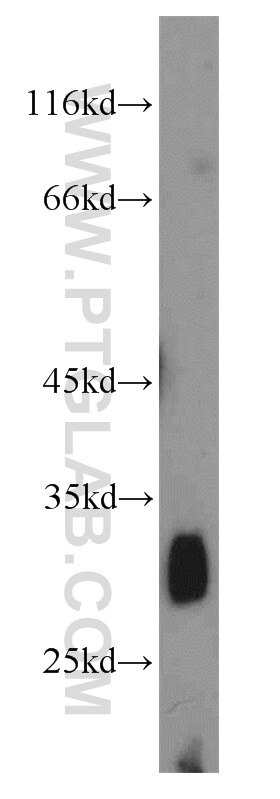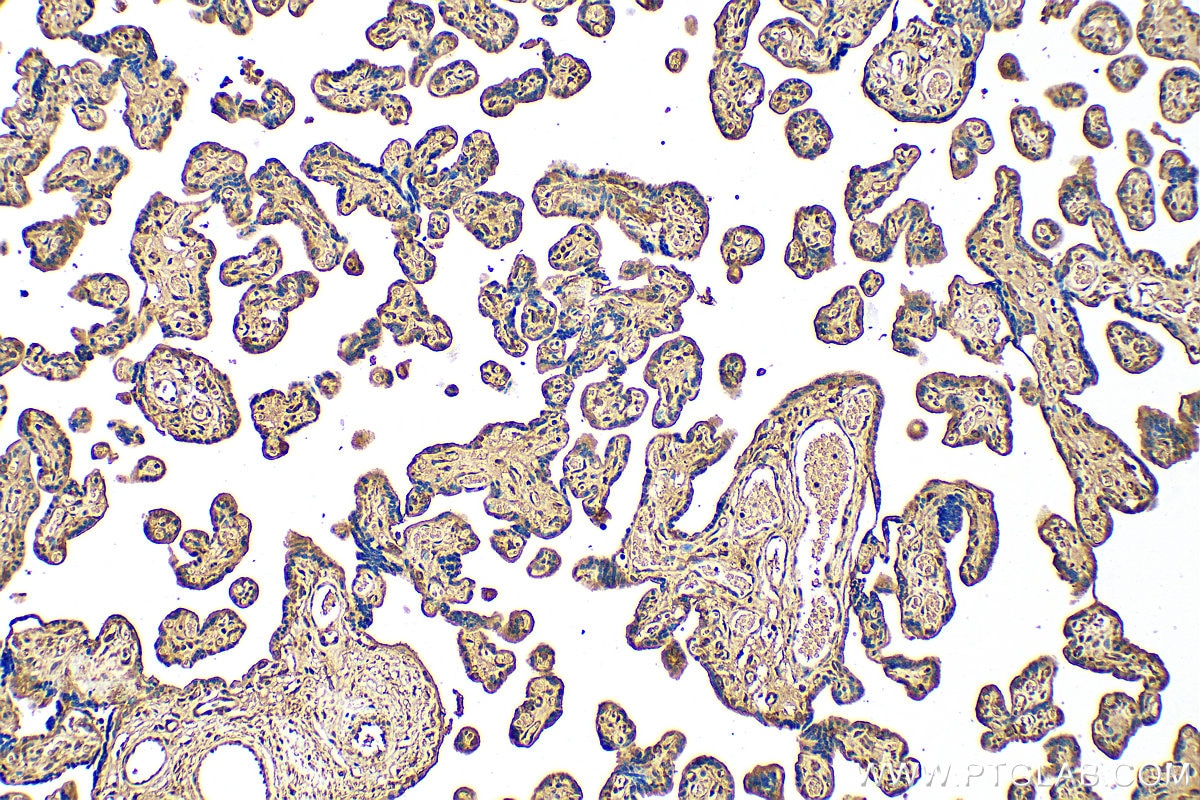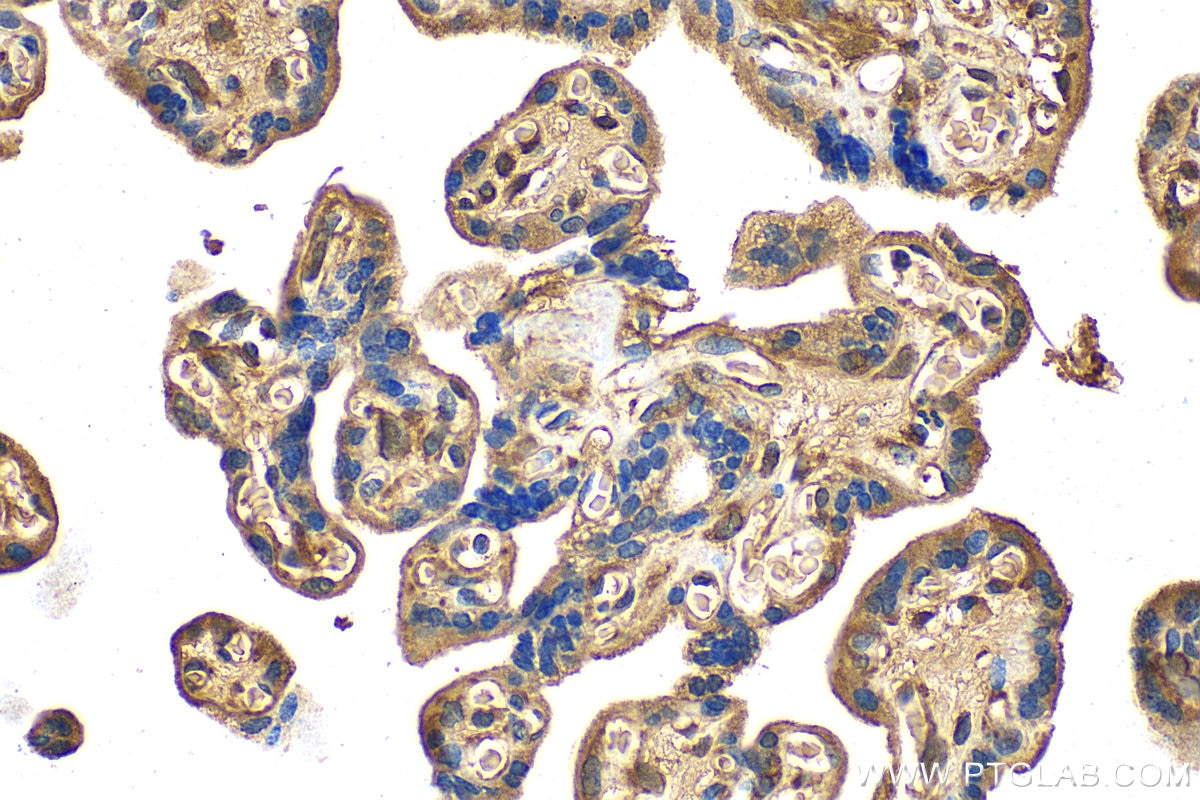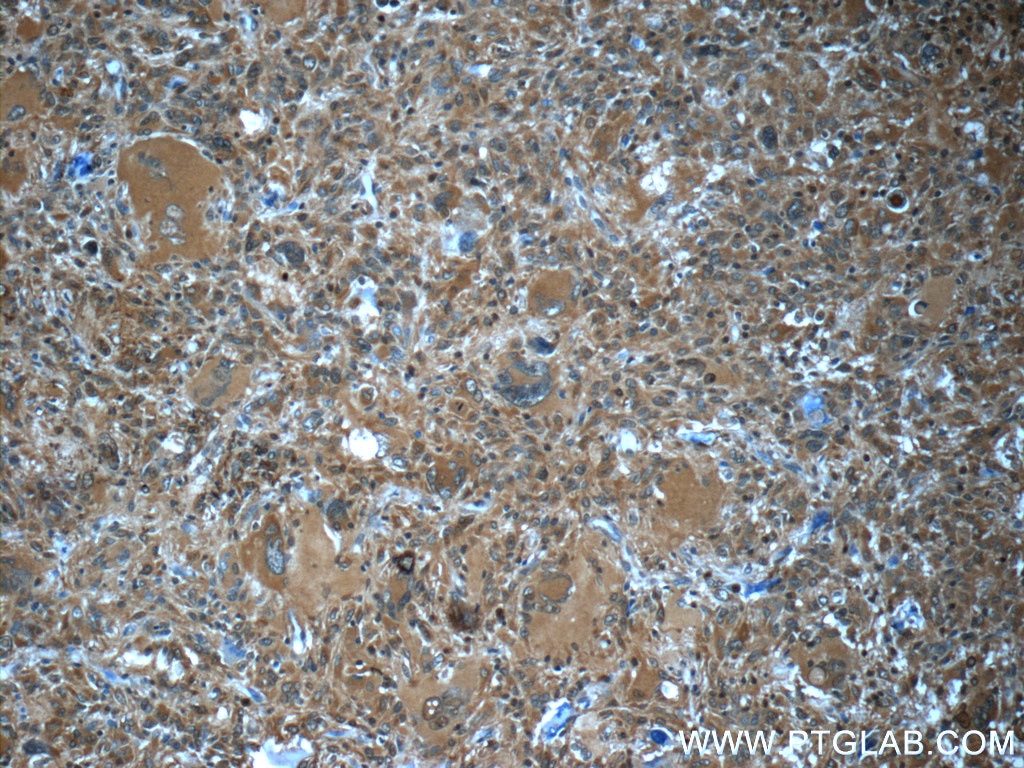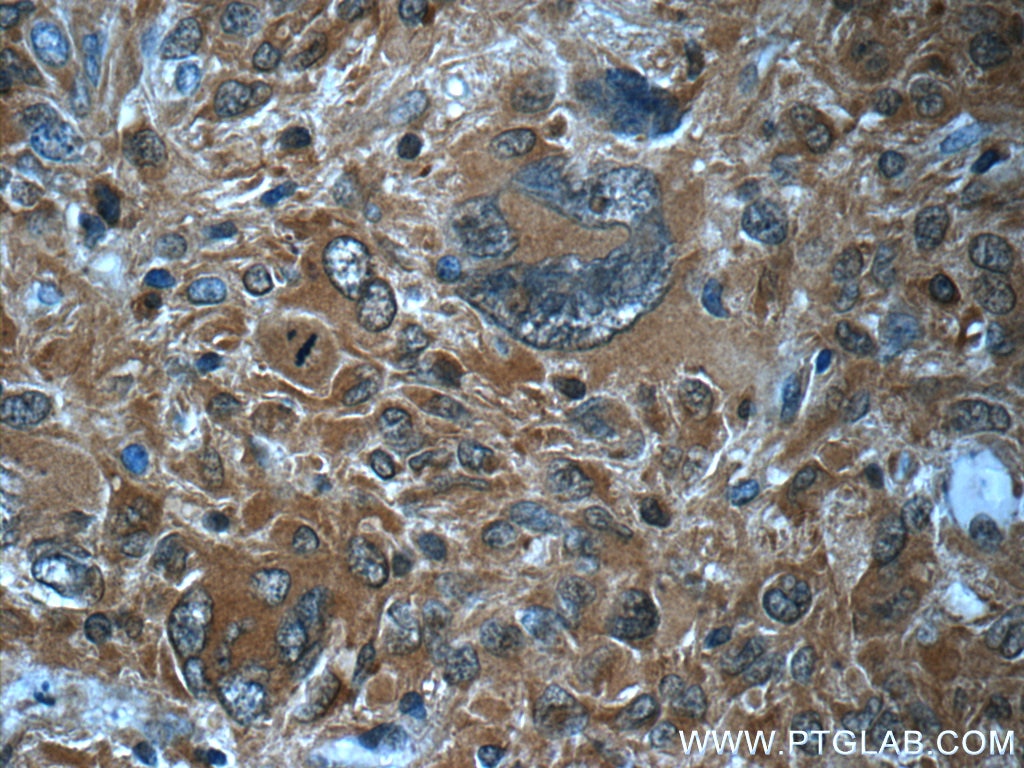Anticorps Polyclonal de lapin anti-HPGDS
HPGDS Polyclonal Antibody for WB, IHC, ELISA
Hôte / Isotype
Lapin / IgG
Réactivité testée
Humain, rat, souris
Applications
WB, IHC, IF, ELISA
Conjugaison
Non conjugué
N° de cat : 22522-1-AP
Synonymes
Galerie de données de validation
Applications testées
| Résultats positifs en WB | tissu splénique de rat, tissu d'intestin grêle de souris |
| Résultats positifs en IHC | tissu placentaire humain, tissu de gliome humain il est suggéré de démasquer l'antigène avec un tampon de TE buffer pH 9.0; (*) À défaut, 'le démasquage de l'antigène peut être 'effectué avec un tampon citrate pH 6,0. |
Dilution recommandée
| Application | Dilution |
|---|---|
| Western Blot (WB) | WB : 1:1000-1:6000 |
| Immunohistochimie (IHC) | IHC : 1:50-1:500 |
| It is recommended that this reagent should be titrated in each testing system to obtain optimal results. | |
| Sample-dependent, check data in validation data gallery | |
Applications publiées
| WB | See 2 publications below |
| IF | See 1 publications below |
Informations sur le produit
22522-1-AP cible HPGDS dans les applications de WB, IHC, IF, ELISA et montre une réactivité avec des échantillons Humain, rat, souris
| Réactivité | Humain, rat, souris |
| Réactivité citée | Humain, souris |
| Hôte / Isotype | Lapin / IgG |
| Clonalité | Polyclonal |
| Type | Anticorps |
| Immunogène | HPGDS Protéine recombinante Ag18290 |
| Nom complet | prostaglandin D2 synthase, hematopoietic |
| Masse moléculaire calculée | 199 aa, 23 kDa |
| Poids moléculaire observé | 26-30 kDa |
| Numéro d’acquisition GenBank | BC020734 |
| Symbole du gène | HPGDS |
| Identification du gène (NCBI) | 27306 |
| Conjugaison | Non conjugué |
| Forme | Liquide |
| Méthode de purification | Purifié par affinité contre l'antigène |
| Tampon de stockage | PBS with 0.02% sodium azide and 50% glycerol |
| Conditions de stockage | Stocker à -20°C. Stable pendant un an après l'expédition. L'aliquotage n'est pas nécessaire pour le stockage à -20oC Les 20ul contiennent 0,1% de BSA. |
Informations générales
Hematopoietic prostaglandin D synthase (HPGDS) is expressed in human Th2 lymphocytes, antigen-presenting cells, mast cells and microglia. HPGDS converts PGH2 into PGD2, a mediator thought to play a pivotal role in airway allergy and inflammatory processes (PMID: 16624958). HPGDS deficiency is a critical factor that impedes cutaneous wound healing in diabetes. Overexpressing Hpgds in ADSCs could be an effective way to accelerate DW healing by alleviating inflammatory cells recruitment and increasing M2 polarization in the proliferation phase (PMID: 35922870). HPGDS is a cytosolic homodimer of 26 kDa subunits which reveal a well-defined active site, enabling a structure-based design of inhibitors (PMID: 24900177).
Protocole
| Product Specific Protocols | |
|---|---|
| WB protocol for HPGDS antibody 22522-1-AP | Download protocol |
| IHC protocol for HPGDS antibody 22522-1-AP | Download protocol |
| Standard Protocols | |
|---|---|
| Click here to view our Standard Protocols |
Publications
| Species | Application | Title |
|---|---|---|
Immunity Intestinal Tuft-2 cells exert antimicrobial immunity via sensing bacterial metabolite N-undecanoylglycine. | ||
Molecules Integrative Analysis of Proteomics and Metabolism Reveals the Potential Roles of Arachidonic Acid Metabolism in Hypoxia Response in Mouse Spleen |

